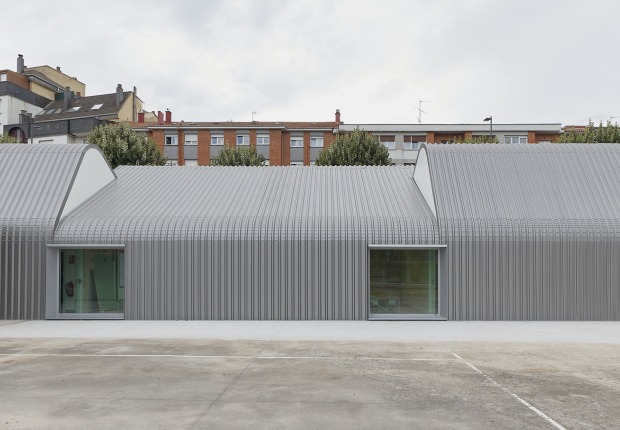Reuse, Renew, Recycle: Recent Architecture from China highlights the work of the new generation of architects who are invested in relatively small-scale interventions and who seek to meaningfully engage the unique cultural context of the country. Many of these projects have been carried out outside of traditional population centers and megacities, and have led to a resurgence of China's secondary cities and rural regions.
The exhibition will include architectural models, drawings, photographs, videos and models drawn from a recent acquisition of some 160 works of contemporary Chinese architecture. From the vaulted ceilings of the Jingdezhen Imperial Furnace Museum in Jiangxi, to an open-air bamboo theater in Hengkeng village, the exhibition will examine careful but decisive interventions that interrogate a less extractive and more resource-conscious future for the practice. architectural in general.
Description of project by MoMA
MoMA ANNOUNCES REUSE, RENEW, RECYCLE: RECENT ARCHITECTURE FROM CHINA OPENING IN SEPTEMBER 2021
Exhibition Will Feature Eight Projects by a New Generation of Chinese Architects That Rethink Existing Definitions of Social, Cultural, and Environmental Sustainability
The Museum of Modern Art announces Reuse, Renew, Recycle: Recent Architecture from China, an exhibition highlighting a new generation of Chinese architects and their commitment to social and environmental sustainability. On view from September 16, 2021, through July 4, 2022, in the street-level galleries, the exhibition will present eight projects that speak to a multiplicity of architectural methodologies—ranging, from the adaptive reuse of former industrial buildings, the recycling of building materials, and the reinterpretation of ancient construction techniques, to the economic rejuvenation of rural villages or entire regions through non-invasive architectural insertions. Anchoring the exhibition will be projects by Pritzker Prize–winning Amateur Architecture Studio (Wang Shu and Lu Wenyu), Archi-Union Architects (Philip F. Yuan), Atelier Deshaus (Liu Yichun and Chen Yifeng), DnA_Design and Architecture (Xu Tiantian), Studio Zhu Pei (Zhu Pei), Vector Architects (Dong Gong), and Aga Khan Award laureate ZAO/standardarchitecture (Zhang Ke). Developed following a four-year research initiative, which has included extensive conversations with the architects and numerous site visits to all the projects presented, the exhibition will include models, drawings, photographs, videos, and architectural mock-ups drawn from a recent acquisition of some 160 works of Chinese contemporary architecture. Reuse, Renew, Recycle: Recent Architecture from China is organized by Martino Stierli, The Philip Johnson Chief Curator of Architecture and Design, and Evangelos Kotsioris, Curatorial Assistant, Department of Architecture and Design. Curatorial advice was provided by Prof. Li Xiangning of Tongji University, Shanghai.
China’s economic and societal transformation of the past three decades has been accompanied by a building boom that made the country the largest construction site in human history. After years of focusing on urban megaprojects and spectacular architectural objects, many of which were designed by Western architects, a rethinking has begun by a younger generation of architects who are working independently from state-run design institutes. Collectively, these architects share an approach to the design of the built environment that is marked by a general skepticism of the tabula rasa approach that has transformed the fabric of the country’s cities and changed the everyday lives of millions. Instead, many members of this generation are invested in relatively small-scale interventions that seek to meaningfully engage with the preexisting built environment and established social structures. Many of these projects have occurred outside the traditional population centers and megacities, and have resulted in a revival of China’s secondary cities and rural regions.
The architects and projects featured in Reuse, Renew, Recycle exemplify what it means to build in China today and explore how modern architecture can be firmly grounded in the country’s unique cultural context. From the vaulted ceilings of the Jingdezhen Imperial Kiln Museum in Jiangxi, to an open-air Bamboo theatre in the Hengkeng Village, to a former sugar factory turned into a hotel near Guilin, the exhibition will examine careful yet decisive interventions that serve as a progressive blueprint for a less extractive, more resource-conscious future for architectural practice at large.















































